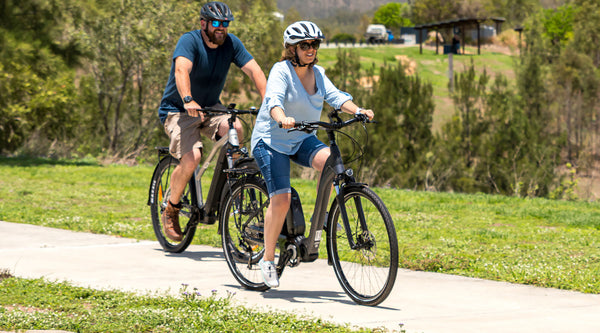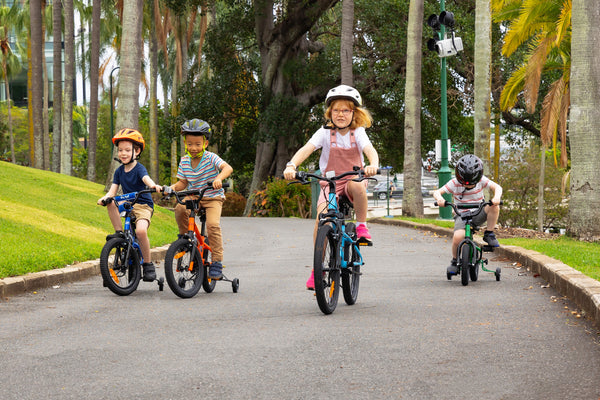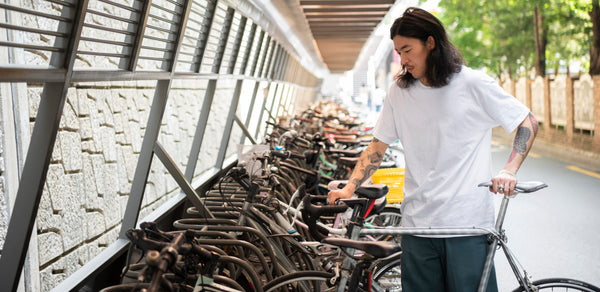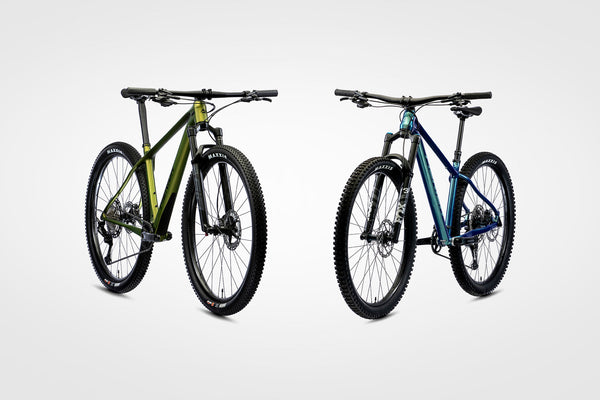Yakima Car Racks: Everything You Need to Know
Forget trying to squeeze your bike inside the car! If you want to explore riding destinations beyond your local area, then you need a car rack. One of the most useful bike accessories available, car racks are perfect for cyclists who need to travel to their ideal trails. Usually capable of transporting between one and four bikes, car racks can be attached to your car in a range of different ways, and there is a bike rack to suit every vehicle and every bike, as well as every budget.
What type of bike rack do I need?
Everybody will have their own preferences based on their wants and needs, so in order to find out what bike rack is best suited to your needs you need to ask yourself a few questions first.
Which vehicle will you be using to carry your bikes?
This will help decide what type of car rack you need. The most common car rack types are trunk mounted, hitch mounted, roof racks, and tailgate pads, each of which covers a different kind of vehicle.
|
Car Type |
Mount Type |
|
Sedan |
Trunk Mounted |
|
Hatchback |
Hitch Mounted |
|
SUV |
Tow-ball |
|
Ute |
Tailgate Pad |

How often are you using the rack and how far are you travelling?
Just like bike helmets, bike racks are meant to make your life easier. You want to make sure you pick the option that will require the least amount of effort based on your needs and how far you need to travel.
Best for Long Distance Travel: Tow ball & Hitch Racks
Tow ball and hitch racks offer a secure and reliable fit which will give you confidence when you’re driving down the highway with your valuable bike hanging onto the back. A quality hitch rack will be very secure and prevent rattling and bouncing, and being behind the car it is also protected from bugs and debris. It also won’t catch wind and increase fuel consumption like a roof rack might.
Best for Short Trips & Everyday Use: Roof Racks for Complete Bikes
If you’re carrying your bike everyday, roof racks that don’t require you to remove your front wheel are a great option. You can just strap your bike in and go, they don’t take up any extra room, stop you from parking, limit visibility, and they are always securely mounted.
What type of bikes are you carrying?
Different racks are built to handle different weights and styles of bikes, and some types of bike racks are best suited to specific types of bikes. For example, you don’t want to be trying to lift heavy dual suspension mountain bikes onto your roof racks.
Best for lighter bikes: Roof Racks
Roof racks really are a great bike transport solution as the bike is kept out of the way, however you will want a light bike to put up on your roof such as a road bike, hardtail mountain bike, or hybrid bike, so that it is easy to load and unload.
Best for Heavier Bikes: Hitch Mount Racks & Tow Ball
Hitch mount racks offer a sturdy and secure fit which can handle big loads and therefore is the most suitable rack for dual suspension mountain bikes and electric bikes. They are also the easiest racks to put your bike on, as most racks will be compatible with a ramp so that you won’t have to lift a thing.

Roof Racks
Mounting your bikes on roof racks is one of the most secure and reliable ways to transport your bikes. They allow you to still have easy access to your boot and don’t limit your visibility while you drive.
Roof racks usually attach feet to the roof of your vehicle to form a stable platform, while some options need you to remove the front wheel to mount the bike, and others allow you to secure both wheels via straps. This is an important part of your decision, as racks that require you to remove a wheel are more stable and usually cheaper, but require removing a wheel every single time.
Most people will keep roof racks attached to their car permanently to avoid the hassle of removing them, and this also allows you to use them to carry other heavy cargo. Best suited to road bikes which are light and easy to lift, as well as kids bikes which are large enough to fit your specific roof rack.
Pros: Roof racks are out of the way and don’t impact access to your boot or rear visibility, all the while offering one of the most secure bike transport options. They’re also capable of carrying other heavy cargo.
Cons: You have to lift the bike up onto the roof every time, which won’t suit all people or all bikes—good luck lifting your dually up onto the roof! Also, every cyclist has a friend who has driven into their carport or garage with their bike on the roof, and damaged their car and or bike—don't let that be you!
|
Best Option: Yakima Fork Chop
|
|

Trunk Racks
Call it what you like—be it a boot, trunk, or hatch mounted bike rack—they all attach your bikes to the rear of the car and tend to be the most affordable option. The rack is mounted using a host of straps attached to the lip of the bumper/boot/hatchback of your car, and can be adjusted to fit your vehicle.
Trunk racks can sometimes be difficult to fit compared to other racks, and need to be fitted properly to secure your bike. They also run the risk of damaging the paintwork on your car. Best suited to someone who is a bit more casual with their riding and doesn’t always want to have a bike rack attached, as you can easily remove this rack and store it.
Pros: The most affordable option and they can easily be removed and folded away when you need to store them.
Cons: Lacks the secure fit of other mounting options, and can be mounted incorrectly which puts your bikes at risk.
|
Best Option: Yakima Kingjoe Pro 3
|
|

Tow-Ball & Hitch Mounted Racks
Hitch mounted bike racks are built to fit in either 1.25” or 2” receiver hitches, while tow ball mounted car racks sit on the actual tow ball. These racks are usually the most expensive, but they offer the easiest way to load and unload your bikes. Some even come with ramps to mount your heavy e-bikes or dual suspension mountain bikes.
You should also look for a rack with tilt or swing features that allows you to access your boot while the rack is mounted. They come in multiple styles to suit your needs; an A-Frame style will allow you to tow a trailer, and the 'boomerang' style base will fit cars with rear-mounted spare tyres.
Pros: Offers a secure and easy mount behind your vehicle which doesn’t increase fuel consumption too much, and is the easiest rack to mount and dismount your bike from.
Cons: Can limit rear visibility and make parking difficult, while it may also obscure your number plate which is illegal in some places.
|
Best Option: Yakima Hold Up It has a convenient tilt system so that you can still access your boot, while the foldable design allows you to easily store this rack in your boot if you need. You can even match it with the helpful HoldUp +2 to carry four bikes at a time.
|
|

Tailgate Pads
If you want to transport your bikes in a Ute, it’s hard to go past tailgate pads. These rest your bike over the tailgate with the front wheel on the outside of the Ute. The tailgate pad is easily mounted to your tailgate with straps secured through the gap between the tray and tailgate. From there you simply chuck your bike in the back, hanging over the tailgate, and secure the down-tube with the cradle.
Your bike is secured and the paint on both your bike and the Ute is protected by the pads - it really couldn’t be much easier. Most pads won’t have a lock; however, you could add a Yakima 9ft Locking Cable + SKS lock for extra security if you needed. Popular with mountain bikers who just want to get their bike and go, no waiting around and no fuss.
Pros: Simple and easy to mount the pad and the bikes and usually don’t take up your whole tray (depending on the size of the bike and tray).
Cons: Usually there is no locking mechanism which is found on other types of racks, and if you get a low-quality rack there is potential to damage the paint on your Ute or bike.
|
Best Option: Yakima Gatekeeper Tailgate Pad
|
|
Whatever option you go for, Yakima is here to help you Take It Easy so you can spend more time riding!









